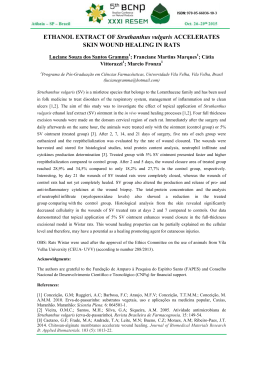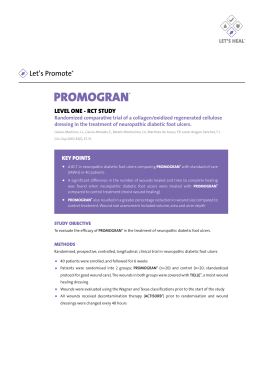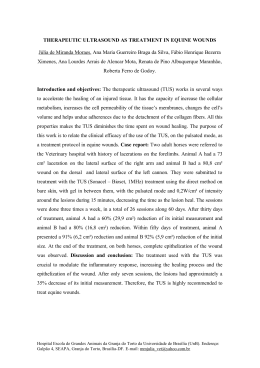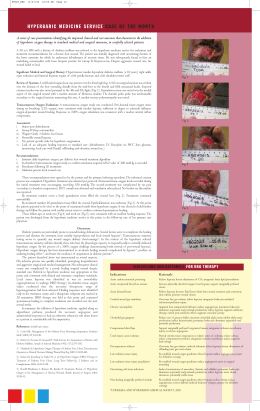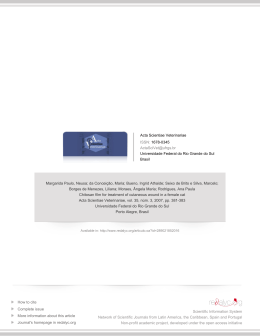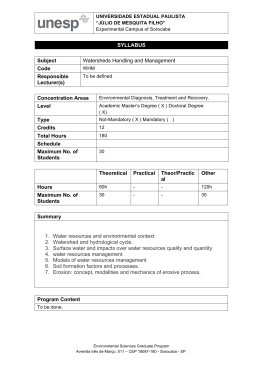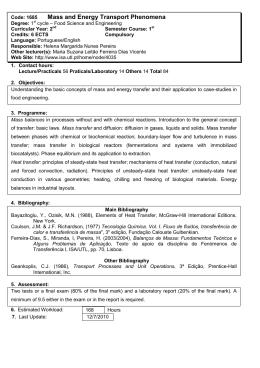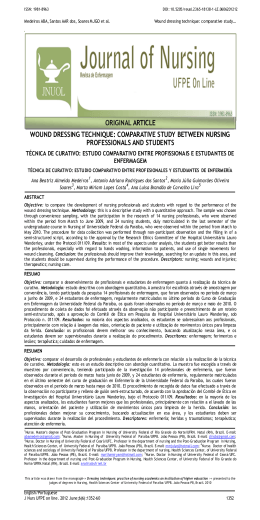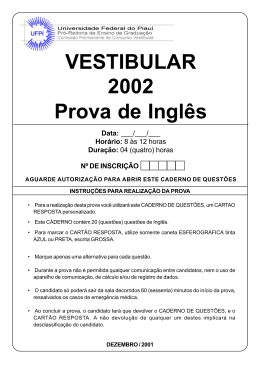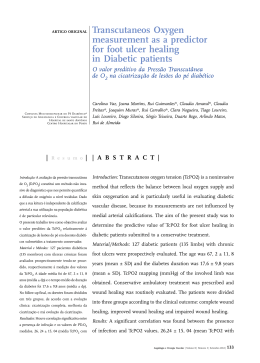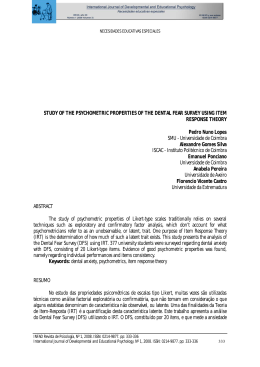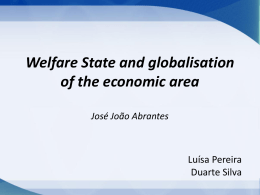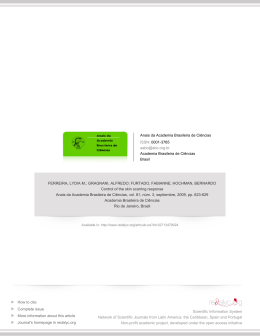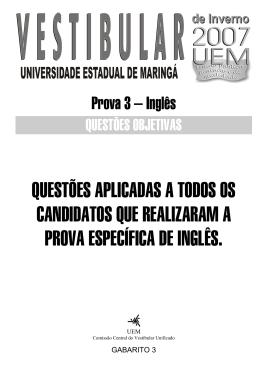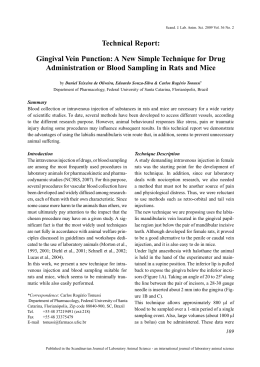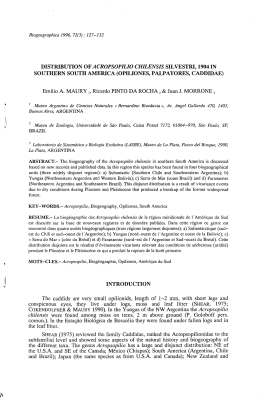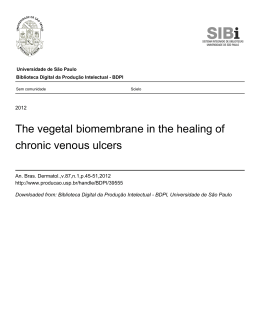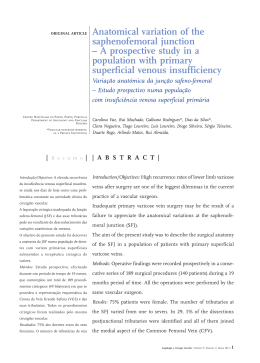Santos, V., Santos, A. (2014) Providing Optimum Wound Healing Conditions during the Proliferative Stage using Kerrafibre, Journal of Aging & Inovation, 3 (3): 50-55 ESTUDO DE CASO / CASE STUDY DEZEMBRO, 2014 PROVIDING OPTIMUM WOUND HEALING CONDITIONS DURING THE PROLIFERATIVE STAGE USING KERRAFIBRE PAPEL DO KERRAFIBRE NA OBTENÇÃO DE ÓPTIMAS CONDIÇÕES PARA A CICATRIZARÃO EM FERIDAS NA FASE PROLIFERATIVA PROPORCIONAR OPTIMAS CONDICIONES DE CURA EN HERIDAS DURANTE LA FASE PROLIFERATIVA USANDO KERRAFIBRE Autores Vítor Santos 1; Ana Sofia Teixeira Santos 2; César Fonseca3 1 Enfermeiro, CNS, MsC, Centro Hospitalar do Oeste, IberWounds Oeste, Caldas da Rainha, Portugal, 2 Enfermeiro, Centro Hospitalar de Lisboa Norte, Lisboa, Portugal, Corresponding Author: [email protected] Abstract : In order to analyze the role of a new structured fibrous dressing in the proliferative stage of chronic wound healing in hard to heal wounds, a case study was performed on a stagnant venous ulcer, which remained non-healed in the past 7 months. All chronicity factors that could affect wound healing were excluded, including biofilm (with the use of polihexanide+betaine, Prontosan range), and compression therapy was provided. The results were very interesting with healing achieved in 7 weeks of treatment. Most of times it is not easy to find/select a dressing to promote granulation and epithelisation, once ideal cleaning/debridement and bioburden control are achieved. Some dressings do not provide a good healing rate, lead to bioburden elevation during time and recurrence in the use of antimicrobials. Other options to promote proliferation are very expensive and need a secondary dressing. Treatment with kerrafibre showned to be very cost effective. Its is also implicit the important role of advanced wound care centers versus conventional care. This case study was originally presented as a poster at Wounds UK 2014 Conference, at Harrogate, England, United Kingdom. Keywords: Fibrous Dressings; Proliferative Stage, Hard to Heal Wounds. Resumo: A fim de analisar o papel de um novo penso fibroso na fase proliferativa da cicatrização da ferida crônica de difícil cicatrização, um estudo de caso foi realizado numa úlcera venosa estagnada, que permaneceu por cicatrizar nos últimos 7 meses. Todos os factores de cronicidade que pudessem afectar a cicatrização foram excluídas, incluindo o biofilme (com o uso de polihexanida + betaína, da gama Prontosan) sendo também utilizada terapia compressiva. Os resultados foram muito interessantes com a obtenção da cicatrizarão ao fim de 7 semanas de tratamento. Na maioria das vezes, não é fácil de encontrar / selecionar um curativo para promover a granulação e epitelização, uma vez alcançada a limpeza ideal / desbridamento e controle de carga biológica. Alguns pensos não fornecem uma boa taxa de cicatrização, e podem ocasionar elevação carga microbiana ao longo do tempo e a reincidência no uso de antimicrobianos. Outras opções para promover a proliferação são muito dispendiosas e precisam de um penso secundário. O tratamento com kerrafibre revelou ser muito rentável. Fica também implícita a importância do papel dos centros avançados de tratamento de feridas versus o tratamento convencional. Este estudo de caso foi originalmente apresentado como um Poster no Congresso Wounds UK 2014, em Harrogate, Inglaterra, Reino Unido. JOURNAL OF AGING AND INOVATION (EM LINHA) ISSN: 2182-696X / (IMPRESSO) ISSN: 2182-6951 Volume 3. Edição 3 Página 51 Introduction having mixed aetiology of both venous and 3 arterial disease. Approximately 1 to 2% of the population will suffer from leg ulceration, with lower limb chronic venous insufficiency affecting up to 50% of the 1 adult population. There are many direct risk factors for venous ulceration including: varicose veins, deep vein thrombosis, chronic venous insufficiency, poor calf muscle function, arteriovenous fistulae, obesity, and history of leg fracture. Recurrent venous ulceration occurs in up to 70% of those at risk. Many venous ulcers are painful, so appropriate pain relief and advice 2 should be given. It is recognised that about 70% of ulcers are venous in origin, 10–15% are arterial, with about 15% of leg ulcer patients JOURNAL OF AGING AND INOVATION (EM LINHA) ISSN: 2182-696X / (IMPRESSO) ISSN: 2182-6951 This case study describes the management of an 86-year-old female who lived independently and was socially active in her community. She had hypertension, venous insufficiency, and had suffered 2 episodes of venous ulcers in the same location. She had an active venous leg ulcer, which had been present for 7 months (Figure 1). It was evaluated in line with clinical guidelines, which suggest that all patients with chronic venous leg ulcers should have an ankle brachial pressure index (ABPI) performed prior to treatment and the ulcer edge should be measured as it often gives a good indication of 4 progress of wound healing. Volume 3. Edição 3 Página 52 Method The patient’s leg ulcer was located mainly in the retromalleolar region, on the distal third of the medial aspect of the left leg. The leg had been eczematous, and became itchy and blistered The patient wore compression stockings and had previously been treated with a sodium carboxymethylcellulose dressing, both with and without silver. 2 before ulcerating. The ulcer measured 3.7cm and the ABPI measurement was 0.91, 2 suggesting only mild arterial disease. There was some slough present, with signs of infection and critical colonisation. The wound was malodorous, with moderate fibrinous exudate. JOURNAL OF AGING AND INOVATION (EM LINHA) ISSN: 2182-696X / (IMPRESSO) ISSN: 2182-6951 The treatment plan was to clean the wound and so exclude biofilm, remove debris and slough. Prontosan Solution (B. Braun) was used to clean the wound during the first 3 weeks. Prontosan Gel (B. Braun) was then used in conjunction with a silver alginate foam dressing, twice weekly for 2 weeks, to prevent biofilm re-organisation, reduce signs of infection, and manage exudate. Volume 3. Edição 3 Página 53 JOURNAL OF AGING AND INOVATION (EM LINHA) ISSN: 2182-696X / (IMPRESSO) ISSN: 2182-6951 Volume 3. Edição 3 Página 54 Subsequently, KerraFibre (Crawford Healthcare) was used twice a week for 2 weeks and weekly for 3 weeks. KerraFibre was chosen due to the ability of its alginate fibres to help absorb and wick away debris from the wound surface, helping to keep the wound clean and so reducing bioburden. It was also chosen due to its ability to absorb and retain moderate to large amounts of fibrinous exudate, and so maintain the ideal moist wound healing environment to allow granulation and epithelialisation. During treatment the patient also wore 2-layer compression bandages (Urgo K2). Compression therapy may be safely used in leg ulcer patients 4 with ABPI≥0.8. Results Granulation and epithelialisation were achieved after 7 weeks of treatment (Figure 6). By limiting wound secretions and minimising bacterial contamination KerraFibre helped to create the ideal healing environment for the wound bed and the wound healed before 2 months of treatment. The dressing was accepted well by the patient, who described it as comfortable. JOURNAL OF AGING AND INOVATION (EM LINHA) ISSN: 2182-696X / (IMPRESSO) ISSN: 2182-6951 Discussion 2 Venous leg ulcers often become infected so it is important to control the bioburden and manage the wound exudate. KerraFibre combines a highcalcium alginate fibre with a high-sodium superabsorbent sulphonated co-polymer gel. The combination of the alginate wicking layer that forms a gel on contact with wound exudate, and the superabsorbent co-polymer gel, maintains the moist wound environment whilst enhancing fluid management. KerraFibre is suitable for moderate to highly exuding wounds with no need for a secondary dressing. Integrated into 1 structure, each of its 3 layers performs a different role – but when combined with the innovative hexagonal structure, the result is a dressing that absorbs exudate and locks it away. Volume 3. Edição 3 Página 55 Conclusion Granulation and epithelialisation were assisted by KerraFibre in the management of this recurrent venous ulcer. After debridement, cleaning of the wound and bioburden control are achieved, dressings such as KerraFibre, which reduce slough and exudate in a wound, help to minimise bacterial contamination, promote granulation and epithelisation. Their effective wound healing is also very cost-effective in managing chronic venous leg ulcers. 3. Briggs M, Closs SJ (2003) The prevalence of leg ulceration: a review of the literature. EWMA Journal 3(2): 14-20 4. Scottish Intercollegiate Guidelines Network. (2010) SIGN Guideline 120: Management of chronic venous leg ulcers. August 2010 References 1. Venous Forum of the Royal Society of Medicine, Berridge D, Bradbury AW, Davies AH et al (2011) Recommendations for the referral and treatment of patients with lower limb chronic venous insufficiency (including varicose veins) Phlebology 26(3): 91-3 2. Grey JE, Harding K, Enoch S (2006) ABC of wound healing: venous and arterial leg ulcers. British Medical Journal 332(7537): 347-50 JOURNAL OF AGING AND INOVATION (EM LINHA) ISSN: 2182-696X / (IMPRESSO) ISSN: 2182-6951 Volume 3. Edição 3
Download
